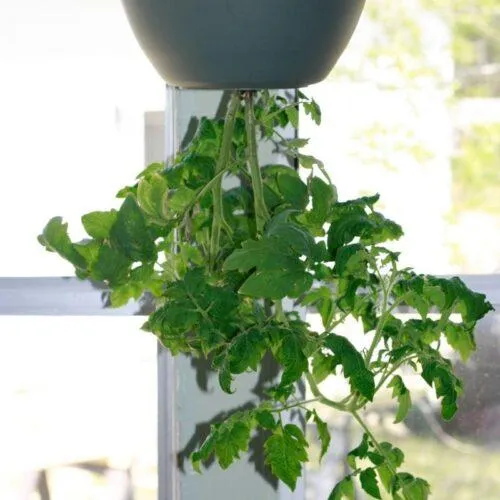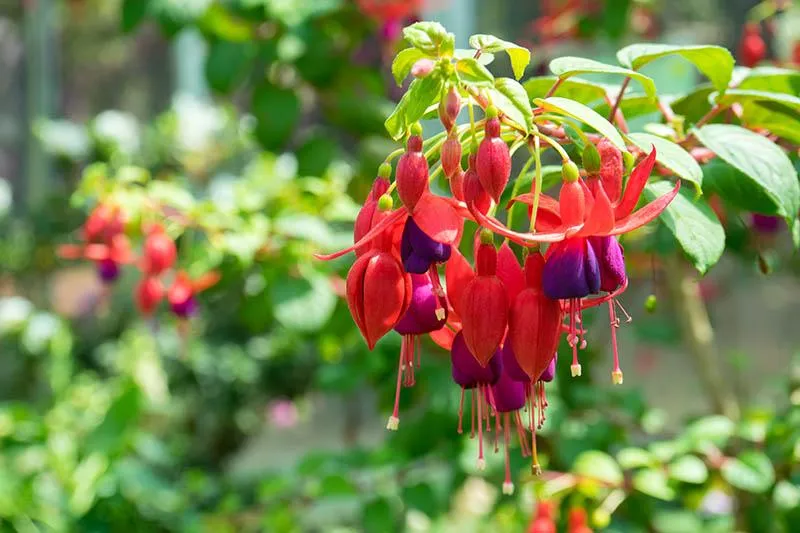Flowers That Hang Down: A Guide to Pendulous Blooms
If you’re looking for flowers with an unusual growth habit, flowers that grow downward may be just what you’re after. These pendulous blooms offer a visually striking alternative to the more common upright-growing varieties. In this article, I’ll cover some of the top options for flowers that hang down, explain their care requirements, and offer tips for incorporating them into your garden design.
Top Choices for Downward-Facing Flowers
Here are some of the best flowers known for their pendulous form:
- Fuchsias – With their colorful hanging bell-shaped flowers, fuchsias are one of the quintessential downward-facing blooms. Varieties like ‘Maggio’ produce an abundance of vivid red and purple blooms all season. Fuchsias thrive in partial shade.
- Petunias – Many petunia varieties, such as ‘Draping Blue Velvet’, cascade beautifully over containers, walls, and edges. They produce flowers non-stop from spring to fall. Petunias prefer full sun.
- Begonias – As begonias like ‘Vista Silverberry’ mature, their flowers droop gracefully. Their foliage often hangs down attractively too. Provide begonias with shelter from intense afternoon sun.
- Impatiens – For constant color, impatiens like ‘Super Elfin XP Galaxy Red’ can’t be beat. Their pendant blooms come in various hues. Opt for shade-tolerant impatiens in gardens with dappled light.
From my experience, fuchsias and petunias tend to be the most prolific downward bloomers. Their versatile growth makes them suitable for hanging baskets, walls, and ledges. But begonias and impatiens offer lovely floral drape as well.

Planting and Care Tips
These pendant performers will reward you with beautiful blooms if given the right growing conditions:
- Light: As noted above, certain varieties like full sun while others prefer partial shade. Place sunlight-lovers in spots with at least 6 hours of direct sun daily.
- Soil: Well-draining, organic-rich potting mix is ideal. Enrich garden soil with compost to promote good drainage. Avoid soils that stay soggy.
- Watering: Keep soil consistently moist, but not soggy. Water at soil level and use soaker hoses for in-ground plantings to prevent leaf diseases.
- Fertilizer: Apply a balanced, water-soluble plant food every 2 weeks during the growing season. This will encourage vibrant foliage and abundant blooms.
- Pruning: Deadhead spent flowers regularly to encourage reblooming. You can also pinch back leggy growth in spring to promote compact, full plants.
The key to thriving drooping blooms, at least in my experience, is providing the right moisture level, light exposure, and nutrition. Pay attention to their needs and they’ll reward you with extra charm and colors in your landscape all season long.
Creative Garden Applications
With their flowing form, downward-facing flowers lend themselves to unique garden installations and designs. Here are some ideas:

- Hanging baskets: Pendant flowers like fuchsias, petunias, and begonias look amazing in baskets hung from porches, pergolas, and arbors. Use sturdy hooks and water-absorbing liners.
- Window boxes: Cascade your blooms over the edges of window boxes for an attractive, framing effect. Trailing impatiens work well here.
- Walls and fences: Train flowering vines like ‘Scarabeo’ clematis mixed with pendant petunias up and over surfaces for instant greenery and color.
- Tiered planters: Stack containers of varying heights, filling each level with different downward-facing flowers for a sculptural landscape feature.
Get creative with how you incorporate these weeping blooms! Their mounding habit makes them kind of like built-in decorations, adding visual interest wherever they’re grown. With some imagination, you can bring whole new dimensions to your garden with flowers that hang down.
Frequently Asked Questions
Here are answers to some common questions people have when growing pendant flowers:
- How can I encourage more flowers? Regular deadheading and fertilizing, along with providing at least 6 hours of sun daily, will stimulate reblooming throughout the growing period.
- Will these plants grows indoors? Many weeping varieties like impatiens and fuchsias can thrive as potted plants indoors next to a bright, sunny window. Check care tag details for specific lighting needs.
- How do I prevent leaf diseases? Water at soil level instead of spraying foliage. Also, space plants adequately for good air circulation. Remove diseased leaves promptly and avoid working in the garden when foliage is wet.
- What’s the best support for cascading plants? For extra-large, heavy bloomers, consider bamboo stakes, wire cages, or latticework for structural guidance. Lighter varieties usually provide their own natural cascade without aids.
I hope this guide has helped answer your questions about incorporating beautiful, pendulous flowers into your landscape! Let me know if any other questions come up. With the right selections and care, you’re sure to enjoy season-long color from above with these downward-facing bloomers.

Downward Facing Flower Facts
| Flower Name | Common Varieties | Bloom Time | Grow Zone | Special Care |
| Begonia | Rex, whippoorwill, angel wing | Spring-Fall | 8-11 | Shade, moisture |
| Impatiens | New Guinea, sunpatiens | Summer-Fall | 9-11 | Shade, fertilizer |
| Fuchsia | Lady, swingtime, mermaid | Summer-Fall | 9-11 | Sun or shade, trim regularly |
| Petunia | Surfinia, wave, easy wave | Spring-Fall | 9-11 | Sun, deadhead often |
| Trailing African daisy | Osteospermum, dimorphotheca | Summer-Fall | 8-11 | Sun, prune after bloom |
FAQ
-
What are flowers that grow downward?
There are some flowers that sort of hang their heads down instead of facing up like most flowers do. Flowers that basically grow facing the ground include some impatiens, orchids, and begonias.
-
How do downward facing flowers pollinate?
Though downward growing flowers position their blooms below, pollination still somehow occurs. Some hanging flowers have evolved in stunning ways to attract pollinators. For example, their colors and markings guide bees to dive under for nectar and brush against pollen-packed anthers. It’s kind of amazing how nature works!
-
What purpose do downward flowers serve?
Botanists have some theories about why certain flowers face earth instead of sky. Perhaps it helps hide vibrant blooms from grazing animals. But is it worth it to sacrifice visibility to pollinators? Or could it be that downward position accomplishes solar orientation for temperature regulation? Relying on expert analysis sounds smarter than guesses.

-
Do any plants bear fruit from downward flowers?
Sure enough, some downward flowering plants still set awesome fruit despite defying expectations. Impatiens and fuchsias often ripen seed pods below dangling blooms. On the other hand, some downward blooms seem meant more for show than fruit production. We can’t say for certain without further studying diverse examples. Anyone care to propose more hypotheses?
-
Which flowers start up but end facing down?
A few flowers begin facing upwards before gradually turning downward. Morning glories open skyward each day then droop as sunlight strengthens. Daffodils do the reverse – buds curl earthward until blooming upright. My friend swears tulips sometimes grow two directions at once, making me wonder if he’s pulling my leg! What’s your experience with ambiguous bloomers?
-
Do any cucumbers grow facing down?
Now that would be bizarre, but no – I don’t think any cucumber flowers grow looking at the ground like some crazy upside-down plant. Cucumbers along with other veggies grow flowers and develop fruit facing upwards the standard way as nature intended I guess. Maybe someday scientists will invent some freaky downward cucumber flower through genetic tweaking, but for now that idea seems a bit nutty!
